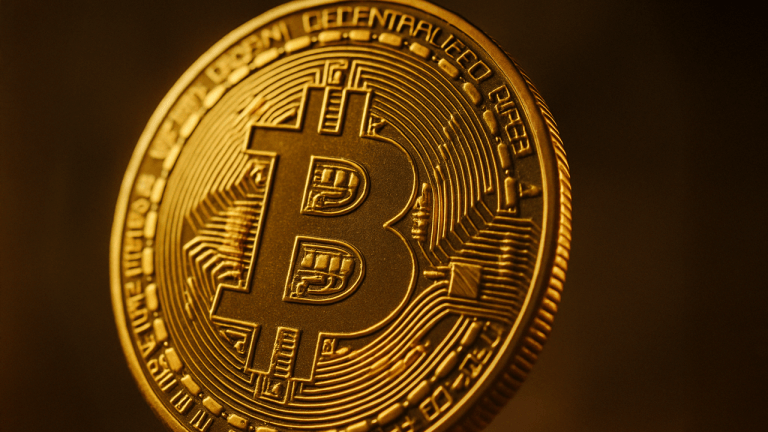Cryptocurrency
Bitcoin Price Watch: $88K Holds—Is a Surge to $90K Imminent?
Published
1 month agoon
By
NewsAdmin
 Bitcoin traded at $88,447 on April 22, 2025, securing a market capitalization of $1.75 trillion. Over the past 24 hours, it moved within a tight range of $86,664.84 to $88,874 on a trading volume of $36.36 billion, reflecting consolidation within a prevailing uptrend. Bitcoin On the 1-hour chart, bitcoin exhibited a consolidative structure marked by […]
Bitcoin traded at $88,447 on April 22, 2025, securing a market capitalization of $1.75 trillion. Over the past 24 hours, it moved within a tight range of $86,664.84 to $88,874 on a trading volume of $36.36 billion, reflecting consolidation within a prevailing uptrend. Bitcoin On the 1-hour chart, bitcoin exhibited a consolidative structure marked by […]
Source link
You may like
Cryptocurrency
Bitget Wallet Partners With Coinpal to Let Users Spend Crypto at 6,000+ Online Merchants
Published
5 minutes agoon
May 29, 2025By
NewsAdmin

Bitget Wallet, a non-custodial crypto wallet, has partnered with payments platform Coinpal to make it easier for users to spend digital assets across a wide range of online retailers.
The move connects Bitget Wallet users to over 6,000 merchants already working with Coinpal, which include businesses in gaming, electronics, fashion and software.
This partnership also brings Coinpal in as a channel partner for Paydify, Bitget Wallet’s decentralized payments infrastructure. Paydify enables crypto payments through QR codes and APIs, settling transactions in stablecoins instantly. The system aims to simplify crypto acceptance for merchants.
Bitget Wallet’s latest tools are part of a broader push to make crypto usable beyond speculation. Users can now pay via a ‘Scan to Pay’ feature and upcoming updates will allow integration with Solana Pay and national QR code systems in select countries — converting crypto to local currencies automatically and at low cost.
“Our work with Coinpal makes crypto payments more accessible,” said Bitget Wallet COO Alvin Kan. “We’re building tools that help people spend their assets in the real world.”
Bitget Wallet plans to expand this payment system into physical retail settings to further grow its ecosystem.
Cryptocurrency
Crypto’s optimism isn’t just hype. It’s a structural feature.
Published
17 minutes agoon
May 29, 2025By
NewsAdmin

Opinion by: Oleksandr Lutskevych, Founder and CEO of CEX.io
Bitcoin markets have consistently shown greater emotional resilience than traditional equities during multiple global shocks.
While some on Wall Street found this “impressive” during the “Liberation Day” sell-off on April 2, such optimism isn’t a glitch — it’s a pattern that extends across digital assets.
Let’s look closer at Fear and Greed Index dynamics in crypto and stocks. After Donald Trump announced tariffs on nearly all countries in April, the Stock F&G Index dropped from 19 to 3 — a more than 80% plunge and a three-year low. In contrast, the Crypto F&G Index declined from 44 to 18 — a 59% decrease.
Of course, these indexes aren’t identical. CNN’s Stock F&G Index tracks traditional sentiment through signals like VIX volatility, safe-haven demand and market breadth. The Crypto F&G Index relies on price momentum, volume and social sentiment metrics. Despite different inputs, both aim to measure the same thing: market emotion.
When viewed side by side during macro shocks, the contrast in mood becomes obvious. When macro winds turn cold, stock investors typically panic harder and recover more slowly than crypto investors.
May 2022 offers an illustrative example. On May 4, the US Federal Reserve raised interest rates from 0.5% to 1%, sparking recession fears that spilled into crypto. Then, on May 9 to May 13, LUNA and UST collapsed. Yet the Stock F&G Index fell 82% (to 4), while Crypto F&G dropped 62% (to 8).
Even while crypto was already under pressure and hit harder by LUNA’s collapse, which contributed to several bankruptcies within the industry, crypto remained less terrified than the stock market. Crypto sentiment took longer to rebound, however, due to the established bear market at the time.
Crypto’s inherent optimism is a strength, not a flaw
Some may call crypto’s optimism naive or irrational. In reality, it’s structural.
The volatility native to crypto recalibrated investor expectations. A 20% drawdown in equities is a bear market. In crypto, it could be a healthy correction. The scale and frequency of price swings conditioned crypto enthusiasts to better withstand market shocks.
There’s also a cultural divide. The stock market is built by and for institutions. It’s cautious and slow-moving. Crypto was born from rebellion and raised by retail, which rapidly shifts to new narratives.
Still, crypto’s optimism isn’t immune to erosion. As institutional influence grows and Bitcoin continues to correlate with equities, Wall Street fears are increasingly bleeding into the sector. During the tariff scare, sentiment recovery timelines were nearly identical across stocks and crypto — a possible sign of optimism erosion.
Even so, crypto optimism remains structurally sound.
The shield of crypto optimism
What protects crypto optimism is the presence of two dominant, and very different, groups.
The first — the believers — view crypto as the future. Within this group, Bitcoin (BTC) adopters tend to see it as a store of value and hedge. To them, short-term volatility is just noise, a distraction from the long-term vision. That perspective leads them to become long-term holders, unfazed by daily fluctuations.
Recent: Dogecoin traders predict 180% DOGE price rally if Bitcoin gains continue
Altcoin believers, meanwhile, draw strength from rapid innovation. New protocols, narratives and technologies keep the sector in constant motion. That ability to reinvent — and rebound — reinforces the idea that crypto is an ecosystem defined by momentum, not stagnation.
There is also a second group, which primarily consists of recent arrivals. They see crypto more as a speculative bet. They comprise many short-term holders and tend to be more reactive to news.
When fear spreads, this second group primarily rushes for the exits, as shown by more frequent peaks in Bitcoin’s Binary CDD for short-term holders (STHs) than long-term holders (LTHs). This group is also more susceptible to the erosion of optimism.
If, however, this second group is the minority, as in Bitcoin, where LTHs control over 65% of BTC’s supply, then all these macro-related fears that creep into the space would have only a limited, short-term effect.
Beyond simple belief
The conviction of believers in a bright future is not based on blind faith but has a solid foundation. In Bitcoin’s case, this foundation rests on a firm, committed holder base, a fixed supply, and a clear, predictable monetary philosophy that stands out during periods of economic uncertainty. These aren’t speculative claims — they’re principles that have gained credibility over time.
Actions also backed this optimism. While markets panicked over tariffs in March-April, Bitcoin LTHs accumulated over 300,000 BTC. Liquidity strengthened, with 1% market depth ending Q1 at $500 million, indicating continued confidence and participation from market makers and investors.
Meanwhile, macro metrics such as global liquidity reached new highs. Multiple Bitcoin cycle indicators, including Pi Cycle Top, are far from flashing a top signal, fueling reassurance that there still could be room for upward movement.
These are just a few of the factors fueling crypto optimism, and more will emerge. Because optimism in this space isn’t temporary — it’s embedded. While fear drives headlines, crypto continues operating like a system preparing for something bigger. And so far, history supports that view.
Opinion by: Oleksandr Lutskevych, Founder and CEO of CEX.io.
This article is for general information purposes and is not intended to be and should not be taken as legal or investment advice. The views, thoughts, and opinions expressed here are the author’s alone and do not necessarily reflect or represent the views and opinions of Cointelegraph.
Published on By Sophon’s utility token, SOPH, fell by 24.97% within 24 hours of its market debut on Binance and several other exchanges, shedding over $80 million from its market capitalisation. The steep decline followed a large-scale airdrop event in which 900 million tokens—9% of SOPH’s total 10 billion supply—were unlocked and distributed to early contributors, farmers, zkSync users, and NFT holders. While airdrops are a common strategy to drive initial interest, they often lead to aggressive profit-taking, especially when token utility is still limited. Binance began SOPH trading at 13:00 UTC on 28 May, shortly after announcing its listing via an X post on 23 May. Other exchanges, including OKX, KuCoin, Upbit, Bitget, and MEXC, also launched trading support on the same day. SOPH initially peaked at $0.11 before tumbling to $0.06 within the same day, recording a 24.97% drop. SOPH’s early volatility is not just a result of the unlocked supply. Binance assigned a “seed tag” to SOPH, categorising it among high-risk tokens prone to volatility. These tags often caution investors about potential price fluctuations, particularly in new projects. In addition, Binance Futures listed SOPH with leverage of up to 75x, creating an environment that incentivised speculative trading and amplified price swings. The trading volume surged by 2,724.8% in the last 24 hours, according to CoinGecko, as early recipients of the airdrop rushed to sell their allocations. This created a large supply overhang that the current market demand failed to absorb, exacerbating the price decline. Sophon is built as a Layer 2 blockchain using Validium technology and is part of ZKsync’s Elastic Chain roadmap. It aims to serve as a decentralised infrastructure for entertainment applications. However, for now, SOPH’s practical utility remains narrow, primarily limited to covering gas fees and contributing to the network’s sequencer decentralisation process. The lack of immediate use cases appears to have contributed to the weak market support during the sell-off. Despite the price drop, on-chain metrics point to rising user engagement. According to DefiLlama, Sophon’s total value locked (TVL) climbed to $20.28 million on launch day, up 14.1% from the previous day. Decentralised exchange (DEX) volumes reached $47.44 million, indicating robust participation in token swapping activities. While speculative activity dominated the launch, the on-chain data shows that interest in the protocol remains strong. The project has raised over $70 million from investors, including Binance Labs, and has positioned itself as a key Layer 2 player within the zkSync ecosystem. Looking ahead, the next supply unlock looms large. Another 20% of SOPH’s total supply, designated as node rewards, will begin unlocking on a weekly basis starting three months from the Token Generation Event. If current market sentiment does not improve or if new utility use cases are not rolled out in time, this influx could trigger further downside pressure. Sophon has indicated that it intends to broaden SOPH’s use cases in the coming months. While no specific dates have been given, the team plans to expand the network’s entertainment applications and decentralised tools. In a recent post, the project team stated that additional products and services would be launched as part of its long-term roadmap. For now, though, the token’s performance is being closely watched by investors, particularly given its sharp debut correction. Airdrops have historically proven to be a double-edged sword—driving early adoption, but often at the cost of price stability. The Worst Mistake for a Flat Stomach Good Morning America Full Broadcast — Monday, May 19, 2025 How to Increase Hip Mobility (Fix The Root Cause) OUTRAGEOUS DEADLIFT PR! 930 LBS x 3 AT 275 LBS BODY WEIGHT! 9 Exercises To Grow Arms at Home | Increase Arm Strength Without Equipment How to Deadlift Like a Tren Twin UPPER BODY WORKOUT FOR ALL FITNESS LEVELS! #shoulderworkout #chestworkout #upperbodyworkout EVERY SUCCESSFUL DEADLIFT FROM THE 2024 WORLD DEADLIFT CHAMPIONSHIPSCryptocurrency
SOPH token drops 24.97% after $900M airdrop, despite strong TVL growth


Market volatility is fuelled by limited utility and high leverage
Investor interest remains high despite short-term dip
Roadmap promises more utility, but outlook remains cautious
Share this article
Categories
Tags


MA v Karen Read Retrial Day 16 – The Coroner Testifies. The prosecution changes the timeline?

‘People will get fed up!’

German Denz solos to Giro stage 18 win
Trending

![]()

![]()

![]()

![]()

![]()

![]()

![]()

![]()
